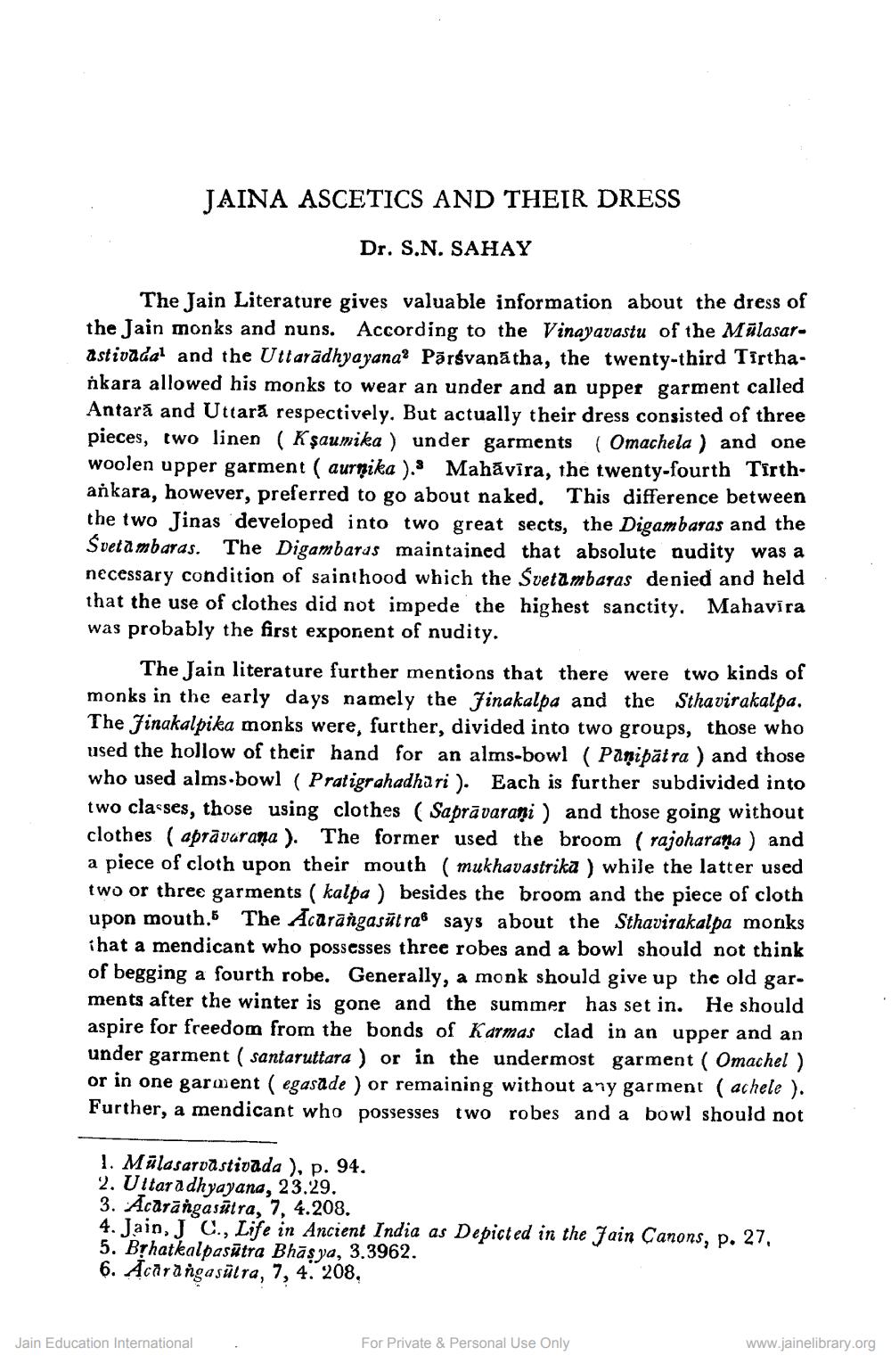________________
JAINA ASCETICS AND THEIR DRESS
Dr. S.N. SAHAY
The Jain Literature gives valuable information about the dress of the Jain monks and nuns. According to the Vinayavastu of the MālasarAstivadal and the Uttarādhyayana? Pārsvanatha, the twenty-third Tirthańkara allowed his monks to wear an under and an upper garment called Antara and Uttară respectively. But actually their dress consisted of three pieces, two linen (K saumika ) under garments (Omachela) and one woolen upper garment ( aurņika ). Mahāvīra, the twenty-fourth Tirthankara, however, preferred to go about naked. This difference between the two Jinas developed into two great sects, the Digambaras and the Sveta mbaras. The Digambaras maintained that absolute nudity was a necessary condition of sainthood which the Svet2mbaras denied and held that the use of clothes did not impede the highest sanctity. Mahavira was probably the first exponent of nudity.
The Jain literature further mentions that there were two kinds of monks in the early days namely the Jinakalpa and the Sthavirakalpa. The Jinakalpika monks were, further, divided into two groups, those who used the hollow of their hand for an alms-bowl ( Panipäira ) and those who used alms.bowl ( Pratigrahadhari ). Each is further subdivided into two classes, those using clothes (Saprāvarani ) and those going without clothes (aprāvarana ). The former used the broom ( rajoharana ) and a piece of cloth upon their mouth ( mukhavastrika ) while the latter used two or three garments ( kalpa ) besides the broom and the piece of cloth upon mouth. The Acarangasüt ra says about the Sthavirakalpa monks ihat a mendicant who possesses three robes and a bowl should not think of begging a fourth robe. Generally, a monk should give up the old garments after the winter is gone and the summer has set in. He should aspire for freedom from the bonds of Karmas clad in an upper and an under garment (santaruttara ) or in the undermost garment (Omachel ) or in one garment ( egasade ) or remaining without any garment ( achele ). Further, a mendicant who possesses two robes and a bowl should not
1. Mülasarvastivada ), p. 94. 2. Ultar a dhyayana, 23.29. 3. Acarängasūtra, 7, 4.208. 4. Jain, J C., Life in Ancient India as Depicted in the Jain Canons, p. 27, 5. Bịhatkealpasūtra Bhāsya, 3.3962. 6. Acārangasülra, 7, 47 208,
Jain Education International
For Private & Personal Use Only
www.jainelibrary.org




